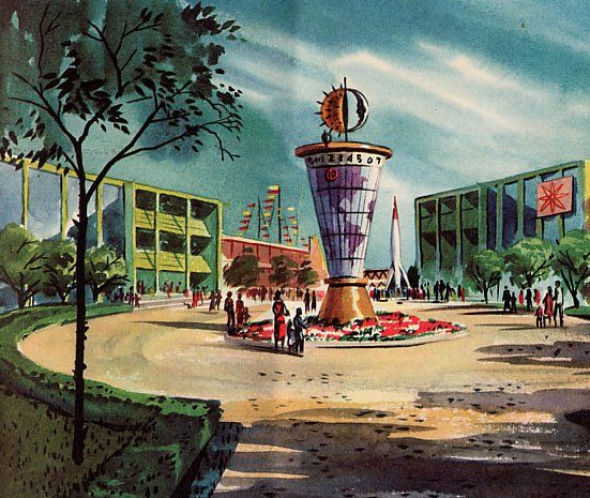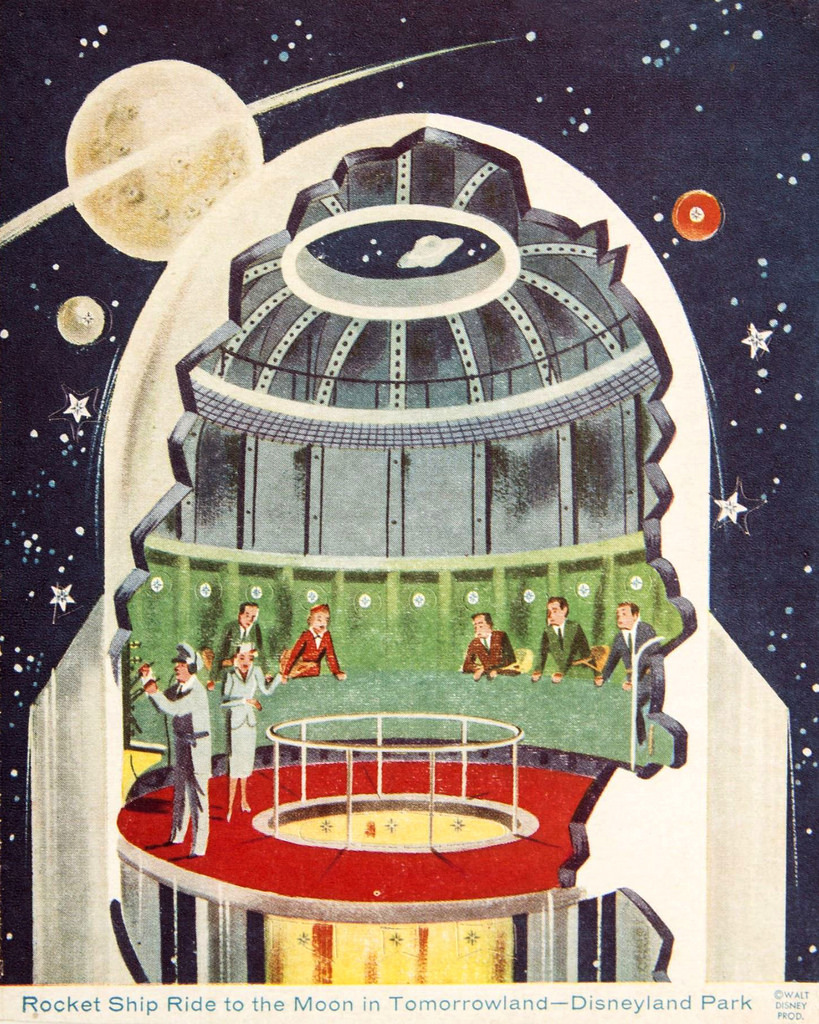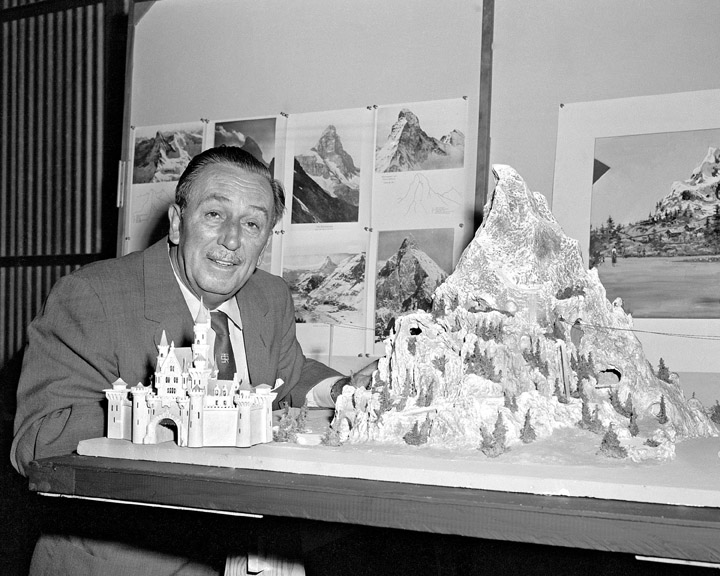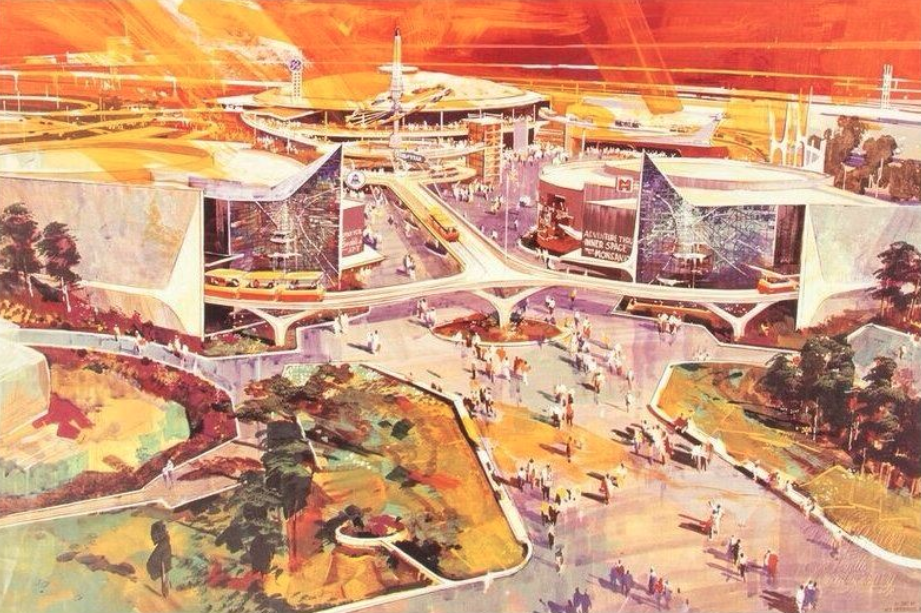Some Disney Parks attractions feel so classic – so essential – it’s almost difficult to imagine the park without them… That’s exactly how fans feel about Space Mountain, a perennial favorite whose mid-century, Space Age silhouette is literally an icon of Disney. But believe it or not, there was a time when Tomorrowland existed without Space Mountain as its anchor; a time when Disney’s designers were hard at work figuring out what, where, and how an interstellar race through space should exist…
That’s why the spectacular tale of Space Mountain enters our Modern Marvels series – our one-of-a-kind Imagineers’ index, and a growing, comprehensive collection of in-depth stories exploring Disney’s best (and worst) attractions on Earth. Standing among other revered favorites from Phantom Manor and The Enchanted Tiki Room to DINOSAUR, Radiator Springs Racers, and more, Space Mountain has earned its status with over forty years of whisking guests through the coldest depths of our galaxy and beyond.
How did this roller coaster in the dark come to be? How does it differ between its installations in Florida and California? How have Imagineers tweaked (or sometimes, entirely rewritten) the ride for Disney’s international parks? Join us as we blast off into this Modern Marvel. Go for launch!
Yesterday’s tomorrows

So many stories of Disney’s most legendary attractions begin in the Tomorrowland guests found when they stepped into Disneyland in 1955. Given that Disneyland’s opening was just one year and a day after the first shovel of dirt had been moved, it was inevitable that parts of Walt’s park wouldn’t look exactly the way he’d hoped, and Tomorrowland was the prime offender.
With a short time table and a quickly-dwindling budget, Tomorrowland turned out to be little more than a land of corporate displays and showcases rented out to Kaiser Aluminum, Dutch Boy Paint, Crane Plumbing, and more. Still, the ingredients of Tomorrowland were born. Set in the inconcievably distant year of 1986, this land of the future did feature a few stand-out experiences, like a walk through the “Nautilus” from Disney’s blockbuster hit of the prior year, 20,000 Leagues Under the Sea.

One of the few “Disney original” attractions offered was Rocket to the Moon, a (motion-less) simulator giving awe-struck audiences of the 1950s a glimpse into what space travel could look like. While simple, the theater-in-the-round production was one of the few “Disney originals” in the land, and set the stage for connection between Tomorrowland and space that seems so essential today.
Walt was often known to remark that Tomorrowland was not yet complete. Just four years after the park’s opening, the land make a leap forward. Three brand new attractions opened that year, each astounding enough to warrant a new “E-Ticket” ride coupon – the park’s most expensive and limited.

While the Submarine Voyage was astounding in its scale, and the Disneyland-ALWEG Monorail was a first-of-its-kind prototype of what tomorrow’s mass transit could hold, it’s the towering Matterhorn Bobsleds that matters to our story today. The first modern, tubular steel-tracked roller coaster (and the first roller coaster to permit more than one train on the course at a time due to block brakes and a controlling computer system), Matterhorn Bobsleds is best known today for being the first of Disney’s mountains… and thus, the first overt thrill ride at Disneyland.

Walt’s long-standing moritorium on thrill rides had been lifted by way of the Matterhorn; evidence that roller coasters could indeed fit in his park, but only if they were masquerading as more…
Despite its massive build-out in 1959, Walt still wasn’t quite finished with Tomorrowland. He and his designers were already ruminating about a potential floor-to-ceiling overhaul of the land’s aesthetic. Naturally, we can see why. In the 1960s, a very clear vision of “tomorrow” was created in American pop culture. Our collective, societal consciousness had settled into the sleek, “mid-century modern” style of upswept roofs, parabolas, “mod” furniture, atoms, starbusts, and simple geometric patterns.
Tomorrowland needed to catch up.
From the snow to the stars

Luckily, the work WED designers had put into the 1964 – 65 New York World’s Fair was about to pay off. Walt’s “New Tomorrowland” was planned for 1967 – a dazzling, kinetic, sleek, and sensational future brought to life through cutting edge innovations from WED. As the swirling rocket jets loomed high over the land, the slowly-rotating Modern Marvel: Carousel of Progress and the sleek aerial highways of the Lost Legend: The Peoplemover would signal just the start of Walt’s “World on the Move.”
Shaped by the hopes of an Atomic tomorrow and the distinctly-American optimism of the Space Age, this Tomorrowland would be a paradise of mid-century futurism.
Walt also spoke with Imagineer and Disney Legend John Hench about the possibility of a roller coaster through outer space as a headliner of this reborn land. And like Matterhorn, this indoor / outdoor coaster would wind around a mountain of its own. Henchs intuitive understanding of architecture and the shapes and angles of the Space Age pretty much hit right on target from the beginning, as the incredible Passholder-exclusive sketch from 1964, above, shows.
From the start, this spectacular, streamlined peak was designed to fit in the “New Tomorrowland” of sleek angles, upswept roofs, parabolas, and gleaming white spires. It would look right at home among the lands mid-century wonders.

Walt and his team apparently even began initial talks with Arrow Development – the manufacturers of the Matterhorn Bobsleds – on the design and development of a potential roller coaster. Or maybe, coasters.
Because for the inside…
Matterhorn is actually comprised of two separate, slightly-different roller coasters (the “Fantasyland” track and the “Tomorrowland” track), each operating independently even as their tracks slalom alongside each other.
To up the concept’s capacity, it’s said that Walt hoped to have four independent tracks operating on Disneyland’s second coaster, Space Port.
However, Space Port was sidelined. Though New Tomorrowland debuted in 1967, the race through the stars wasnt among its lineup. Though dreams of a star-studded roller coaster remained on the backburner, attention had shifted to the new “Florida Project.”




